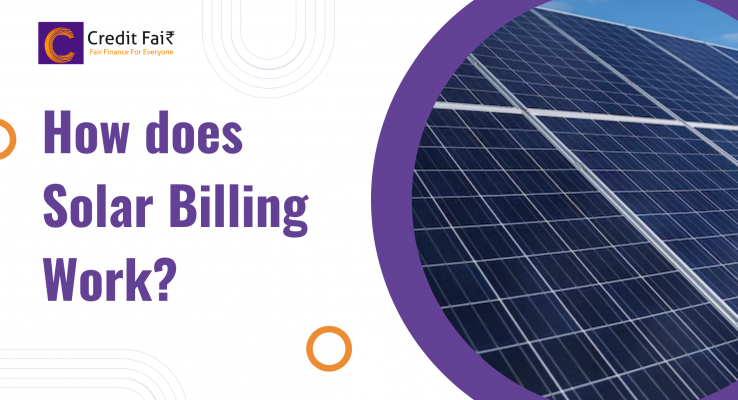If you’re embarking on the journey toward solar energy, congratulations! You’re joining a movement that’s not just about cutting-edge technology but also about contributing positively to the environment.
It’s a practical, eco-friendly choice embraced by homeowners, businesses aiming to cut down on electricity expenses. And when those initial solar bills arrive, showcasing your savings, it’s a rewarding feeling indeed!
However, navigating solar billing can sometimes be as complex as understanding the solar panels themselves. We’ll break it down together, so don’t worry.
The first crucial step is comprehending your solar financing options. Homeowners often opt to own their solar systems through a solar loan.
These solar loans allow you to borrow the necessary funds, repaying them monthly along with low interest over the loan term.
Net Metering
Solar system is up and running efficiently, generating surplus power during those sunny days. What happens to that excess energy?
It allows you to offset future utility bills based on the surplus energy your solar panels feed back into the grid. Essentially, any energy produced but not utilised on-site gets redirected to the electric grid, earning you credits applicable to future utility expenses.
Let’s say your solar panels generate 1,000 kWh of electricity in a month. During the day, you use 600 kWh directly from your panels and send 400 kWh back to the grid.
At night or on cloudy days, you might need 700 kWh from the grid. With net metering, the 400 kWh credit you sent to the grid during the day offsets part of the 700 kWh you drew later. Instead of paying for the full 700 kWh, you only pay for the ‘net’ usage, which is 300 kWh (700 kWh – 400 kWh credit). This helps reduce your overall electricity bill by balancing what you contribute and what you consume.
But hold on—net metering policies vary by state and utility, so it’s crucial to understand how they function in your area.
Do you still have an electric bill with solar panels?
Yes, you’ll still receive an electric bill since your panels might not cover 100% of your energy requirements.
But you’re still saving on electricity costs! Your utility bill becomes a barometer, illustrating how much energy your system produced versus your actual usage. Typically, three components shape your utility bill:
- Service fee/charge: A flat rate for being connected to the utility grid.
- Taxes: State and local levies collected universally.
- Kilowatt-hour usage (kWh): Calculated based on electricity usage from the grid. With solar, you’re only charged for the kWh you’ve consumed.
Remember, your total kWh usage determines your monthly bill. With solar panels in place, this usage diminishes, leading to decreased reliance on the utility grid and subsequent savings.
How Much We Have Actually Saved?
To calculate your actual savings is to record the production of your inverter over a billing period, then subtract the amount of power fed back to the grid (displayed on your bill). This will give you the amount of free power you have consumed from your Solar and calculate it from there.
Let take example:
Suppose your solar inverter records a production of 1,500 kilowatt-hours (kWh) over a billing cycle. Within that same period, your utility bill indicates that you’ve fed 400 kWh back into the grid.
By subtracting the 400 kWh fed back to the grid from the total production of 1,500 kWh, you’ve consumed 1,100 kWh of free power generated by your solar system.
This final figure of 1,100 kWh represents the electricity you’ve used from your solar panels without having to draw it from the grid. This is where your actual savings
Now you’re ready for the environmental benefits and cost savings that come with it. Interested in learning more about our solar loan.
Visit our website: www.creditfair.in or call 9967235047 to learn more.

